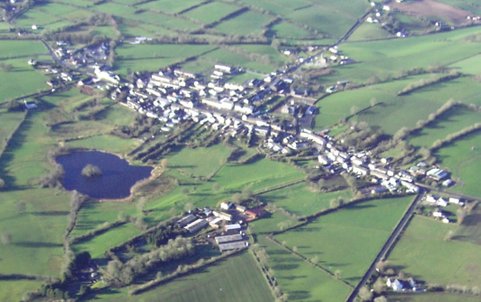Stewartstown and District Local History Society
Co. Tyrone
Northern Ireland
About ...
The east Tyrone area of Ulster has a rich and chequered history. Since the Early Christian period it has claimed links with St Patrick, Ireland’s national apostle; placenames such as Donaghenry and Donaghrisk indicate ecclesiastical sites of great antiquity. Ballyclog – the place of the bell – can lay claim to strong links with the Bell of St Patrick and its richly-decorated shrine, both now in the National Museum, Dublin.
Conquered in the Middle Ages by the O’Neill clan from Donegal, the district was the site of the ceremonial inauguration of ‘the O’Neill’ at Tullaghogue and of various O’Neill island strongholds or ‘crannogues’. During the Nine Years’ War, or the Earl of Tyrone’s Rebellion, the army of Elizabeth 1 and the forces of Hugh O’Neill fought for supremacy in this now peaceful countryside.
Following the ‘Flight of the Earls’ and King James 1’s decision to implement a radical plantation scheme many Scots settlers were attracted to settle in the former territories of the defeated Gaelic chieftains: Andrew Stewart, formerly Lord Ochiltree, was directed by James 1 to undertake the settlement of a large proportion of east Tyrone, in the barony of Dungannon. Here he established his main settlement at ‘Crew’ or ‘Crieve’, a former O’Neill base. His town was named ‘Castle Stewart’ and from that he derived his new title of Lord Castlestewart; in later years the name ‘Stewartstown’ proved more enduring for the settlement. The remains of his castle are gone, but at Roughan, a short distance from Stewartstown, there are still to be seen the substantial ruins of his son’s castle.
The turbulence of the seventeenth century gave way to the relative calm of the period following the Glorious Revolution, when the Stuart monarchy ended and the followers of William of Orange celebrated the ‘glorious deliverance’ and victory of Protestantism. But many Protestants, especially Presbyterians, found themselves excluded from power in the new dispensation – a feeling which led to the growth of republican ideas and a keen awareness of the inequalities of the current political system. In Stewartstown a Presbyterian group– the Yankee Club – looked enthusiastically on George Washington and his revolutionaries as models. Revolution also occurred in agriculture with the establishment and growth of the linen industry, with Stewartstown thriving as a centre of the brown linen trade. Fortunes were made and lost, and conspicuous wealth was displayed in the building of grand houses and the laying out of rolling parkland.
The prospect of rich coal deposits at Cratley, near Stewartstown, and at Coalisland, led to massive investment by the Dublin government. An ambitious canal system was created, and the remains of this civil engineering project can be seen in the surviving stretch from Coalisland to Lough Neagh, and at Newmills where Ducart’s aqueduct still impresses the visitor.
Political tensions continued to complicate the lives of those who tilled the land or wove their yarn; violent events like the ‘party fight’ at the Black Bridge of Clonoe in 1829 were not unique, unfortunately, to east Tyrone. Emigration, especially in the years of the Great Famine (1845 -1848), saw the population slump as whole families sailed to the New World.
Railways, World Wars, the onward march of the motor car ... the district has witnessed these, and more. Amateur historians have a fertile patch to explore among the ‘bushes of Tyrone’.
